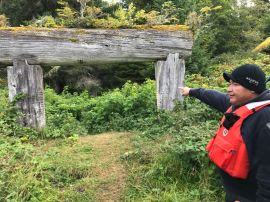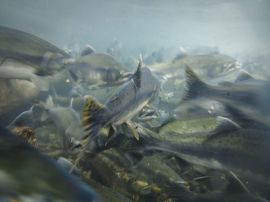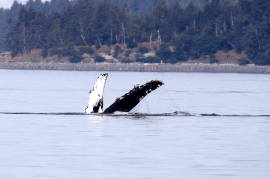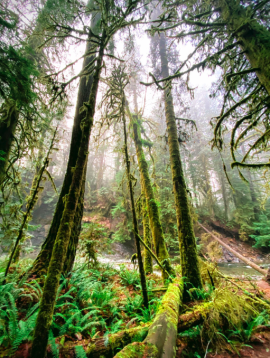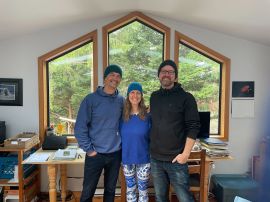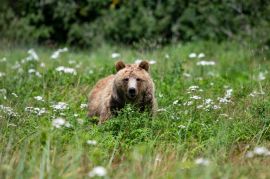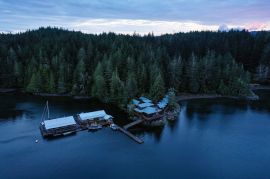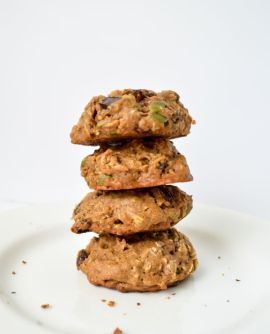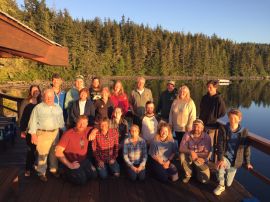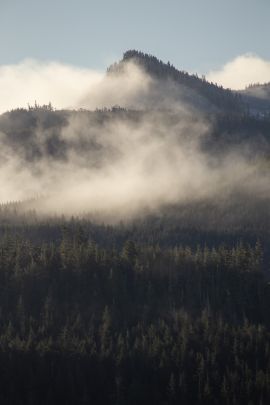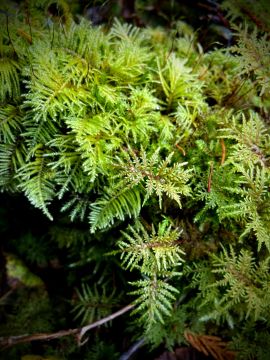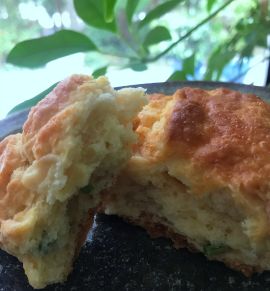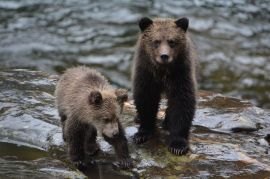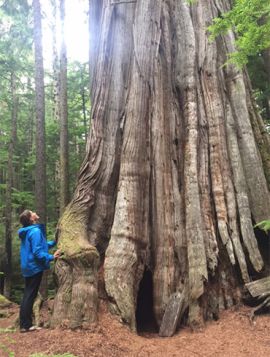Forest Fungi
| The fungi kingdom is incredibly diverse, ranging from the smallest microscopic specimens to the largest known organism in the world. When we think of fungi, the first thing that comes to mind is mushrooms, but in reality, most species in the fungi kingdom don’t produce mushrooms. Even when they do grow mushrooms, this still only makes up a tiny part of the organism. Mushrooms are the fruiting body of a fungus, which sprouts up from the soil or from decaying wood to spread spores, just like a fruit spreads the seeds of a tree. The rest of the body of the fungus is generally underground or inside dying wood, consisting of microscopic root-like branches called mycelium. Many types of fungi grow and produce mushrooms in the cool, wet conditions in the understory of the rainforest here in British Columbia, each with its own properties. Some contain toxic compounds, and others make a delicious stir fry, but they all stimulate a lot of intrigue. | 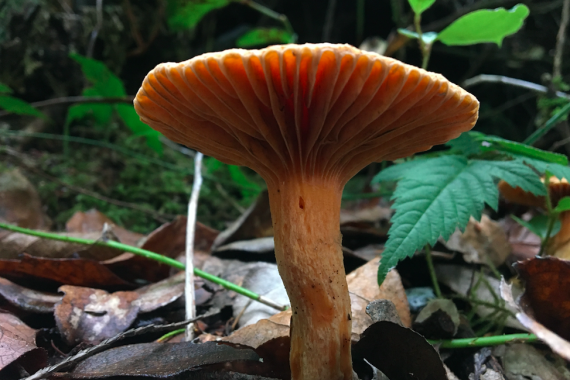 |
Ecological Role
Fungi occupy several very important ecological niches. The first is their ability to decompose organic matter and cycle important nutrients. Fungi have a remarkable ability to break down tough organic materials like cellulose and lignin in wood, which many other decomposers cannot digest. Once these fibrous materials are broken down into simple sugars, the fungi ingest them to be used as energy. Other organisms in the soil can also benefit from this decomposition and external digestion, like invertebrates that depend on fungi to break down the tough materials before digesting them. Even if these nutrients aren’t absorbed, they return to the soil to be taken up by plants and used as energy for growth. Of course, as we know, plants are able to photosynthesize, which means turning light energy from the sun into chemical energy like sugar. These plants are then eaten by consumers higher up the food chain, allowing for the cycling of nutrients to all organisms in an ecosystem. When those organisms eventually die, the ecosystem looks to the decomposers, like fungi, to make those nutrients usable again. Essentially, fungi are the avid recyclers of the forest. Fungi really took it to heart when they heard “reduce, reuse, and, of course, recycle!”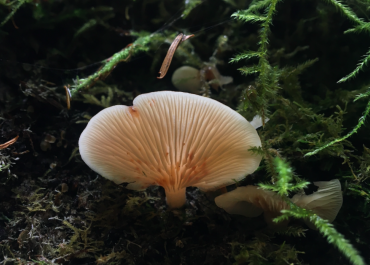 |
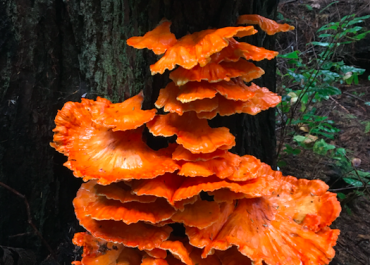 |
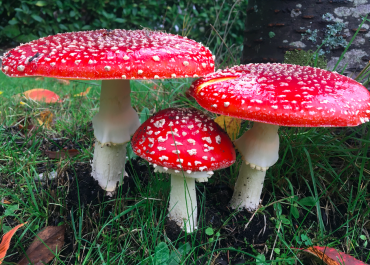 |
In some contexts, fungi can be separated into two categories; the good guys and the bad guys. However, this personification only works if you compare fungi that decompose wood with fungi that work in harmony with trees as a symbiosis. The latter are called mycorrhizal fungi, and they help trees with various tasks such as communication and nutrient absorption. Through their mycelia in the soil, they wrap around tree roots and connect to their tissues via grafts. The mycelium transport communicative chemicals from tree to tree, enabling trees to warn their neighbours of a pathogen or share nutrients which allows young trees in the canopy to thrive. For improved nutrient absorption, the mycelia will bring nutrients directly from the soil to the tree root graft, allowing faster and more efficient absorption. Fungi provide these services in exchange for the simple sugars that the tree produces by photosynthesis which are easy for fungi to use as energy.
Lichen is another interesting form of symbiosis in fungi. Species of lichen are composed of two different organisms working together in a permanent symbiosis. One organism in the partnership is a fungus. This individual makes up the body of the species, the shape, texture and size. The second individual in the partnership is algae, a photosynthesizing bacteria. The algae are generally found on the surface of the fungus structure and sometimes determine the species' colour. This symbiosis functions well because the algae need the fungus to provide safety and water storage to allow the algae to survive in environments it wouldn’t be able to on its own. Meanwhile, the fungus gets sugars produced by the algae during photosynthesis. This harmonic partnership has stood the test of time, as lichens are considered some of the oldest living things. |
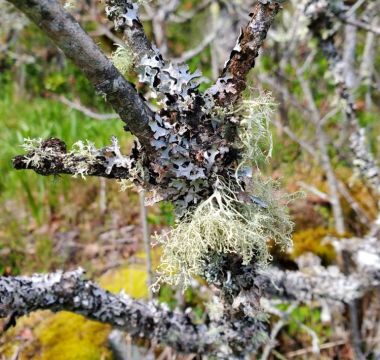 |
Mushroom Identification
Gills - When you think of a mushroom, you typically think of a stalk and a big round cap like gilled mushrooms. True to their name, the flat surface underneath their round cap contains gills, sometimes hundreds of them. These radial plates of delicate tissue are for reproduction. Spores are produced and released from under the gills and carried by wind or rain drops to spread the fungi’s seeds. Not all mushrooms have gills; some have pores instead. This significant feature can help identify the fungus. |
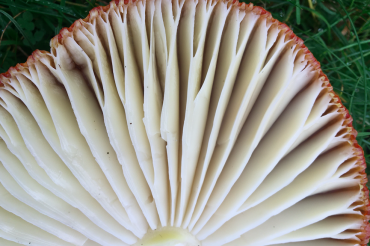 |
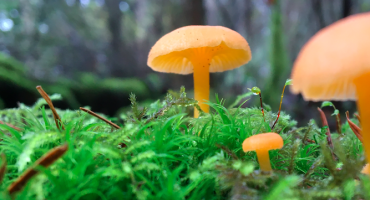 |
Stipe - The mushroom stipe is another feature that can help identify a fungus. The stipe is the stem or stalk that holds up the mushroom cap. Some mushrooms have a stipe, and others don’t, helping to identify the species. Mushrooms with a stipe can have features like a ring or skirt. The shape and height of the stipe can also help you identify the fungi. |
Cap - The cap of a mushroom may be it's most noticeable feature. The cap's colour, shape and texture all give clues as to which fungus produced the mushroom. |
 |
-- By Sylvie Stewart Grantham



